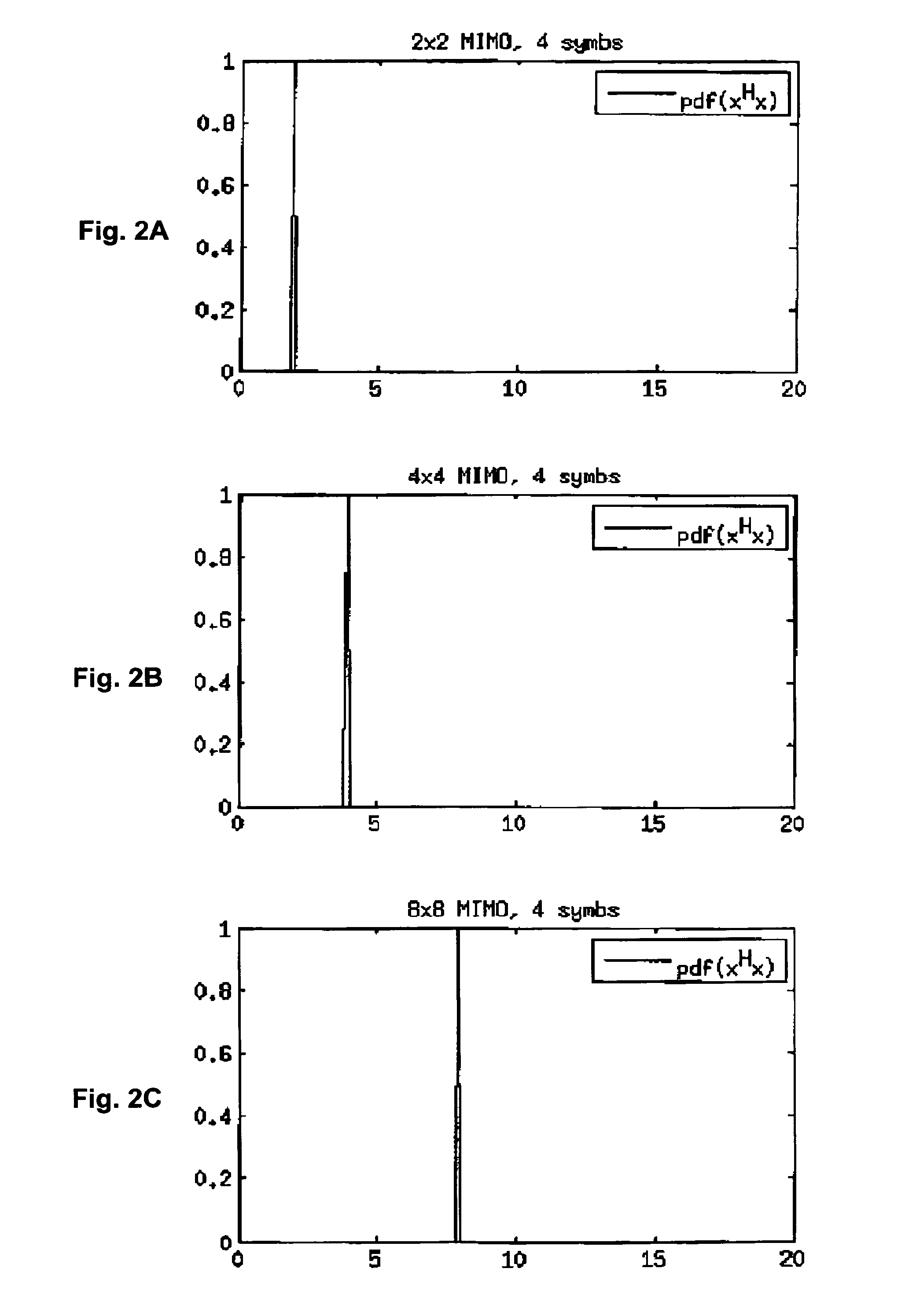Detection Process for a Receiver of a Wireless MIMO Communication System
a wireless mimo communication and receiver technology, applied in the field of wireless communication, can solve the problems of np-hard problem, performance loss compared to the ml detector, and many implementation problems, and achieve the effect of limiting the complexity of the algorithm and near-ml performan
- Summary
- Abstract
- Description
- Claims
- Application Information
AI Technical Summary
Benefits of technology
Problems solved by technology
Method used
Image
Examples
Embodiment Construction
[0059]There will now be described one particularly embodiment of a process which is adapted to carry out a receiver for a MIMO wireless communication system, such as a Orthogonal Frequency Division Multiplex (OFDM).
[0060]In order to clarify the description of the process (II), some theoretical considerations will be introduced first (I).
I. Theoretical Considerations
[0061]The conventional and basic Sphere Detector is based on the Equation (1)—recalled above—which is centered on the received signal y.
[0062]In the case of a depth-first search algorithm, the Babai point is defined as the first solution that is given by the algorithm. For such conventional system, the induced Babai point is implicitly a Zero Forcing-Successive Interference Canceller (ZF-SIC) and, in the case of a Fixed Neighborhood Size Algorithm (FNSA), this definition is extended and is considered as the solution that would be directly reached, with no neighborhood study.
[0063]In opposition with the above mentioned Bab...
PUM
 Login to View More
Login to View More Abstract
Description
Claims
Application Information
 Login to View More
Login to View More - R&D
- Intellectual Property
- Life Sciences
- Materials
- Tech Scout
- Unparalleled Data Quality
- Higher Quality Content
- 60% Fewer Hallucinations
Browse by: Latest US Patents, China's latest patents, Technical Efficacy Thesaurus, Application Domain, Technology Topic, Popular Technical Reports.
© 2025 PatSnap. All rights reserved.Legal|Privacy policy|Modern Slavery Act Transparency Statement|Sitemap|About US| Contact US: help@patsnap.com



